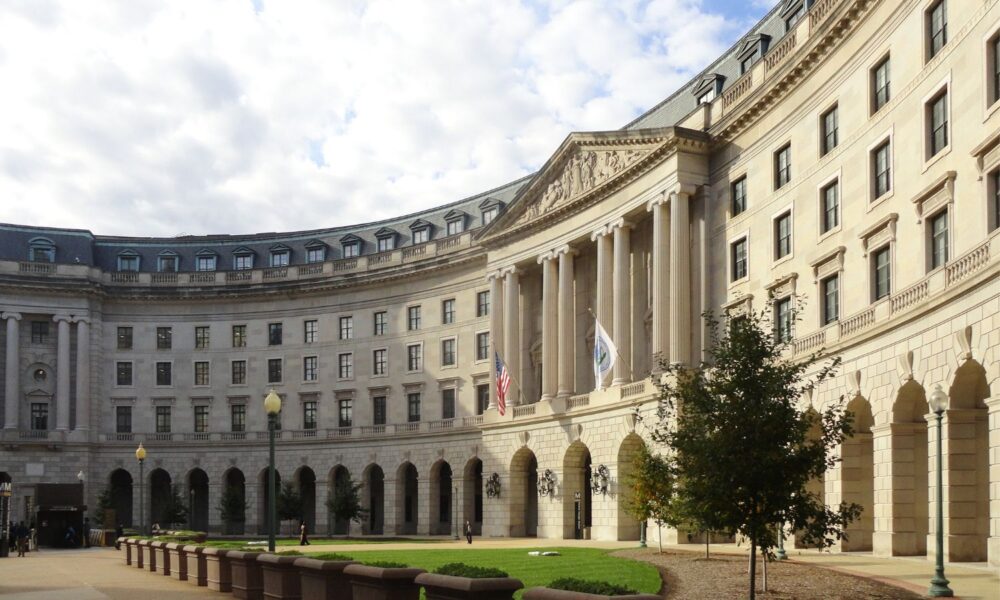The Environmental Protection Agency (EPA) recently released its updated scientific integrity policy for public comment which will have major consequences for how the EPA conducts and carries out scientific activities, and particularly for how it protects EPA scientists and their work from political interference. Strong scientific integrity protections can prevent egregious attacks on science from occurring such as censoring or suppressing scientific reports, interfering with data collection, disbanding scientific advisory committees, and other kinds of political interference.
When scientific integrity is violated or science sidelined at agencies such as the EPA, it can have enormous consequences for the public such as diminishing or undermining safeguards against environmental hazards such as air pollution, toxic chemicals, and hazardous waste. Prior research has shown this can have disproportionate negative effects on underserved communities – Black, Indigenous, low-income communities, and communities of color – all of whom have long been burdened by pollution exposure and other stressors.
When evaluating the EPA’s draft scientific integrity policy, we certainly found sections to celebrate but also parts that raise concerns. The EPA has some strong and unique sections related to building a culture of scientific integrity at the agency, but its policy also has gaps in its accountability section, a lack of language on the intersection between equity and scientific integrity, and several clauses that, in certain circumstances, could end up restricting the voices of scientists.
The Good
EPA’s scientific integrity policy makes a number of positive updates, including several items for which my colleagues and I have advocated for years. There are full sections about the importance of the free flow of scientific information to the public, about using science in decisionmaking and how to make this process more transparent, and about promoting a culture of scientific integrity at the agency.
The EPA has extended scientific integrity protections to professional development opportunities, explicitly allowing federal scientists to publish papers and speak at conferences on their work, and to aid scientific advisory committees, which are vital in providing the EPA with independent expert advice to help ensure that the agency follows the best available science.
Also laudable, the EPA scientific integrity policy states that the policy will “ensure that comments received on draft scientific documents during any interagency review are made in writing and made public” and that “career EPA employees make the final determination concerning changes or suggested changes to scientific documents or other scientific products in response to external (including interagency) comments.”
Interagency comments—particularly the required review from the Office of Information Regulatory Affairs (part of the White House’s Office of Management and Budget)—are some of the least transparent processes in policymaking and can have a major effect on final rules. We’ve documented a number of attacks on science on major rules in which scientific information was stripped out during interagency review, such as for the regulation of PFAS chemicals, coal ash, particulate matter air pollution, and formaldehyde.
Also interesting, the EPA’s draft policy calls for the formation of a scientific integrity committee made up of career EPA employees, chaired by the EPA’s scientific integrity officer, and responsible for producing an annual report on the state of scientific integrity at the agency. The committee will “expeditiously draft and prominently post on EPA’s website necessary procedures including those on addressing scientific integrity concerns, addressing DSOs [differing scientific opinions] and others such as clearance of scientific products, scientific communications, authorship and attribution, and other topics as needed.”
This effort goes well beyond that of other federal agencies which have usually designated only a single person (a scientific integrity officer or chief scientist) or no person (relying on their parent agency’s scientific integrity officer) to manage the agency’s scientific integrity efforts. Hopefully this committee will prove flexible in helping address the myriad scientific integrity issues that pop up at the EPA and push the agency to devote more attention and resources toward protecting scientists and their work from political interference.
The Bad
Unfortunately, in a number of spots, the EPA’s scientific integrity policy is either too vague to be effective or could prove to have unintended negative consequences.
We were disappointed that the EPA did not include more specific details about how to better integrate equity into the agency’s scientific integrity policy. The EPA included a few statements in the document about the importance of diversity, equity, inclusion, and accessibility as it relates to scientific integrity, but these were generalized statements that failed to include any details about how this will be monitored or evaluated. The EPA could have followed the example set by the White House’s Office of Science and Technology Policy’s scientific integrity policy which, while still generalized, included more language spelling out how scientific integrity violations can have disproportionate effects on underrepresented groups.
The accountability section of the EPA’s scientific integrity policy is a mixed bag. On the one hand, the agency laid out several good specifics on how an investigation of a potential scientific integrity violation would go, and how scientific integrity violations should be taken as seriously as government ethics violations, and the need to encourage and facilitate early communication with the scientific integrity officer on the issue. These are definite improvements when compared to prior versions of the EPA’s scientific integrity policy.
On the other hand, the EPA does not state exactly how scientific integrity violations can be formally raised (the agency states that they will issue guidance in the future), there is a lack of language laying how agency staff in higher positions of power – like political appointees – would be held accountable if they are found to have violated the scientific integrity policy, and there is no language on how scientific integrity violations spanning different agencies would be resolved (for instance, if a White House official substantially edited an EPA scientific report for political reasons, which has happened before).
The Ugly
Perhaps worst of all, the EPA’s draft scientific integrity policy dedicates a substantial amount of language aimed at restricting EPA scientists from opining on their agency’s policy decisions.
UCS’s position on this has long been clear: We believe federal scientists should be able to speak freely to the public and media about their scientific work and share their scientific expertise to the greatest extent possible. But we also understand that a federal scientist is not necessarily the agency’s premiere expert when speaking about areas outside their work purview. We understand, too, that, while science should play an fundamental role in policymaking, other factors also often come into play—such as administration priorities, budgetary considerations, and logistics.
Here’s the problem: EPA’s scientific integrity policy includes so many prohibitions and restrictions on the ability of federal employees to speak on policymaking issues that bad actors could wield these restrictions to censor federal employees from speaking about their scientific work and activities. We’ve written about this type of concern before, for instance in section three of a public comment letter to the Department of Health and Human Services (HHS).
During the Trump administration, agency officials censored federal scientists, prohibiting them from providing the public with needed scientific information when it clashed with the misinformation spoken by President Trump. For example, federal scientists faced reprimands from agency officials when they tried communicate accurate scientific information on the spread of COVID-19, on the path of Hurricane Dorian, or on the causes of gun violence in the aftermath of the El Paso and Dayton shootings. Under the EPA’s new scientific integrity policy, such censorship of federal scientists could return if the scientists’ efforts to correct the President were construed as opining about policy.
EPA scientists need strong protections against political interference
One surprise about the EPA’s draft scientific integrity policy is simply how late it is arriving. The White House’s Office of Science and Technology Policy’s scientific integrity framework had previously set out a series of deadlines for agencies to follow. The EPA’s solicitation of public input on its draft scientific integrity policy was supposed to have taken place six months after the framework was released—in July 2023.
The long six-month delay is disappointing since EPA scientists need and deserve to have the strongest scientific integrity protections in place in a timely manner.

There is no doubt that the EPA needs to urgently have a strong scientific integrity policy. At UCS, we documented some 207 attacks on science at 40 different federal agencies during the Trump administration; the EPA was by far and away the agency involved with the highest number of these attacks on science (59 out of 207 attacks). Should a future administration prove antagonistic to science-based policies, it is highly likely that the EPA would once again become a prime target for political interference.
If you agree that the EPA needs to have the strongest scientific integrity protections in place, you can tell them so by submitting a written comment to EPA before their deadline of February 23.

